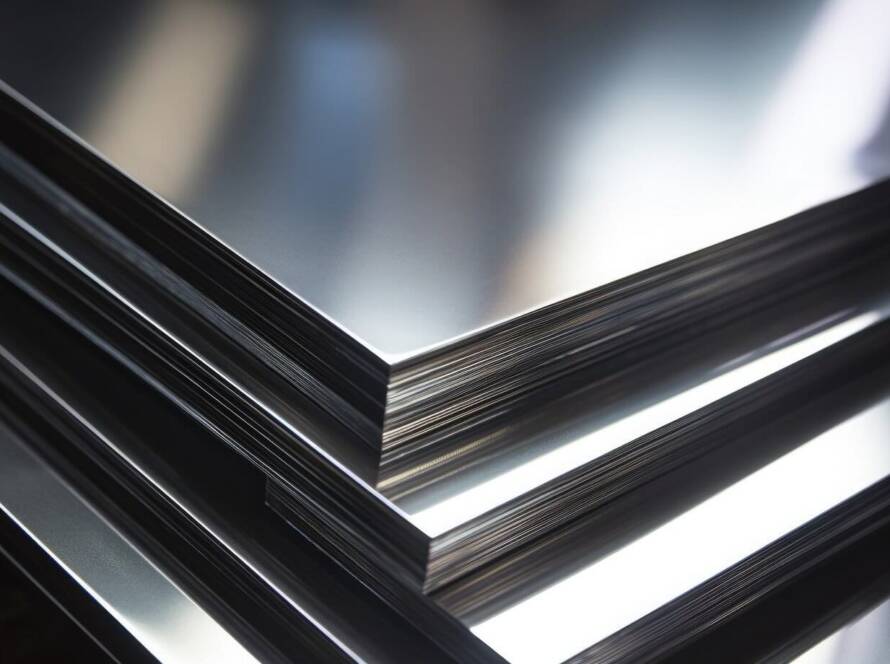Guide to Aluminum Profiles for LED
In recent years, many people have chosen to illuminate their homes or specific parts of them with the now-famous LED strips. The reasons for their success can be summarized in two points: they offer significant energy savings compared to other lighting sources and provide a highly aesthetic effect. But to install these strips, the right support is needed: aluminum profiles for LED strips are the most popular choice. Let’s discover what they are, their functions, characteristics, and explore the best alternatives available on the market today.

Aluminum Profiles for LED: What Are They?
LED strips are essentially copper or aluminum strips on which chips are placed in series. They are usually sold in rolls of varying lengths and typically come with an adhesive surface for easy application on various surfaces. They are available in different versions, distinguished by the color of the light, brightness, protection level, and so on. Some models also allow for light intensity adjustments. The strips are flexible, can be cut to the desired length, and can adapt to practically any environment, even where it seems impossible to place a regular lamp. Additionally, they enhance the décor, serving a dual function: lighting up spaces and making them more aesthetically pleasing.
There are numerous ways to install LED strips. Luckily, it’s not always necessary to drill holes in the wall with nails or a drill, as most LED strips available in stores or on e-commerce sites come with a double-sided adhesive strip that allows them to be attached to almost any surface. However, it’s important to remember one thing: when turned on, LEDs generate heat, albeit significantly less than traditional bulbs. Still, to ensure the longevity of the “little lights,” this heat needs to be dissipated. That’s why aluminum profiles for LED strips are often used: one of aluminum’s many properties is being an excellent heat dissipator. By placing the strips inside these profiles, you eliminate the risk of heat building up, which could happen with direct installation on other types of surfaces.
But the benefits of aluminum profiles for LED don’t stop there. They also provide excellent protection for the strips, shielding them from elements that could damage them, such as humidity, dust, water, smoke, and so on. Moreover, aluminum profiles are available in various types, shapes, and finishes, allowing them to easily fit into any style or décor and any environment, even seemingly impossible spaces.

The Most Common Aluminum Profiles for LED Strips
Installing aluminum profiles for LED strips is straightforward. First, you need to gather all the necessary items: besides the LED strip and the profile of the correct dimensions, you will need tools like screws, a drill, putty, and sandpaper. Start by sticking the LED strip inside the profile: once positioned correctly, simply press it down to ensure it adheres well to the metal. Then, close the profile with its cover. On the back of the profile, insert the so-called spring clips (one for each meter of profile length).
After this, you can attach the profile’s side closure, making sure to thread the strip’s cables through the designated spaces. At this point, you need to attach the metal plates to the wall, taking careful measurements, and fix them with screws (there’s also the option of using double-sided tape to fix the profile). After connecting the LED strip’s electrical terminals to the power supply, you can finally install the aluminum profile by inserting the spring clips into the metal plates. To complete the job, you can finish by putting putty and sanding where necessary, and you’re done. Once installed, the aluminum profiles will prevent the LED strip lights from overheating (thereby improving performance and extending their lifespan) while also protecting them from dust and other external threats.
What we’ve just described can be considered the standard method for applying LED strip profiles, but the procedure can vary depending on the product used. There’s a wide range of aluminum profiles for LED, so anyone, regardless of their needs, can find the best solution. In terms of types, the most common profiles for this application are flat, angled, and recessed ones. They often come with their mounting brackets and covers, which can be transparent, satin, or other types.
Profiles, aside from shape and height (slim profiles are thinner than standard and large ones), can also differ in finishes, surface treatments, and colors. Regarding lengths, the most common options on the market are one-meter or two-meter aluminum profiles. While less common, three-meter profiles are also quite popular. Upon request, longer pieces can be made. Casal Aluminium provides customers with profiles of every shape and size to offer the most suitable solution for any need and request.

How to Choose the Right Aluminum Profile for LED
Since the market offers such a wide variety, selecting the right aluminum profile for LED can be challenging. It’s essential to have a clear idea of the project you wish to accomplish to understand which solutions to choose. There are many factors to consider, but the main ones before making a purchase are essentially three:
- Dimensions, which must be appropriate for the installation. For example, if you want to place the LED strip in a tight space, such as under a cabinet, make sure the profile is slim enough. The choice of slim profiles is also popular among those who want to minimize the aesthetic impact.
- Shape, which should suit the project. As mentioned, aluminum profiles for LED strips come in various shapes (C-shaped, single or double channel, round, flat, etc.), so it’s crucial to choose the option best suited to the environment where they will be installed. Angled profiles, which are installed in corners between the wall and ceiling, are particularly appreciated for their unique aesthetic and direct lighting.
- Quality, both in terms of the material used to make the profile and the finishes applied. Defects on the profile’s surface can negatively impact the project’s aesthetic appeal and make the installation of the strip or the profile itself more challenging. Therefore, it’s always advisable to turn to qualified and experienced manufacturers and suppliers.
Where to Buy Aluminum Profiles for LED Strips
Speaking of qualified and experienced suppliers, one of the leading references at the national level for aluminum products is undoubtedly Casal Aluminium. The company, based in Casale Cremasco, offers a wide range of aluminum extrusions, including round bars, rectangular bars, square bars, and tubes, as well as custom profiles and profiles for LED strips. Specific treatments such as mechanical processes, rolling, surface finishes, and more can be applied to the pieces. Casal Aluminium produces and supplies products used in various fields: construction, awnings and shutters, mechanics, heating, furniture, appliances, and the solar industry.
Among its offerings, aluminum profiles for LED strips stand out, a product type that has seen growing demand in recent years. To find the most suitable solution for your needs and aesthetic preferences, or to request a customized quote, the best option is to contact the company directly. You can do this by filling out the form available on this page of Casal Aluminium’s official website: simply enter your details and contact information, write your request or questions for the company’s staff, and click the Submit button. Once the message is received, a Casal Aluminium expert will contact the client to find the best solution. Alternatively, you can contact the company by sending an email to [email protected] or calling +39 0373458005.



